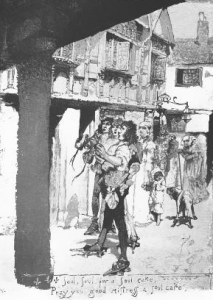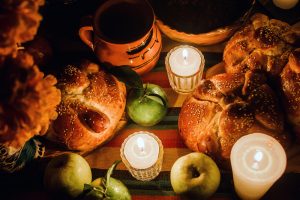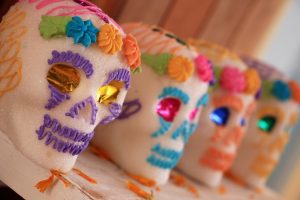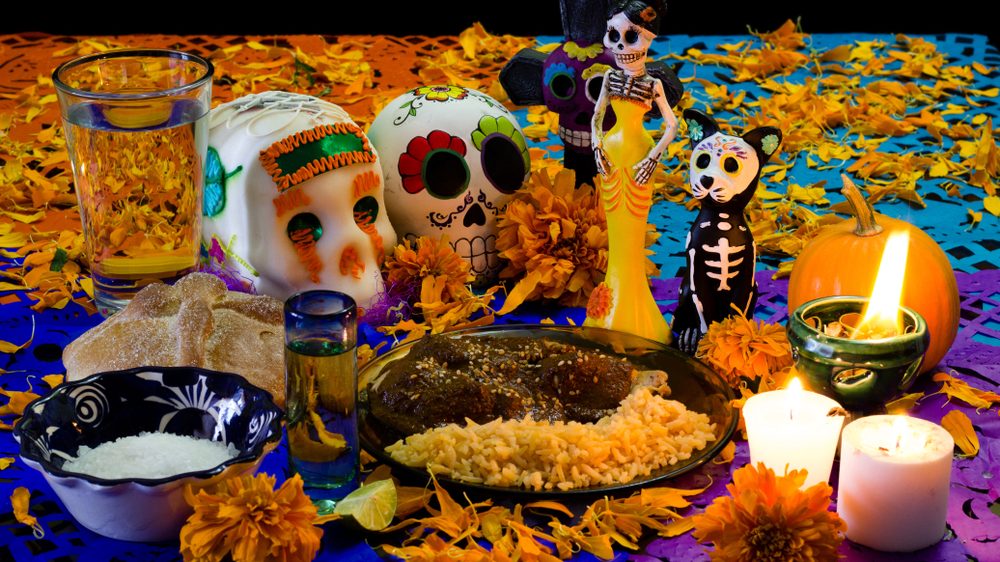Halloween is almost upon us, as well as All Saints' and All Souls’ Days.
You may be finishing up costumes for trick-or-treating, carving pumpkins, or planning which candy you most look forward to eating in the days following Halloween, but don’t forget about the spiritual significance of this important pair of feast days too — the celebration of all the saints in Heaven and prayer for the souls in Purgatory.
And while most people think of traditional recipes for Thanksgiving and Christmas, there are some great homemade treats you can make for these holy feast days too, as well as other food-related traditions that you can incorporate into your celebrations.
Here are a few ideas to get you started.
For Halloween
Halloween, or All Hallows’ Eve, is technically just the vigil for All Saints’ Day. “Hallow” is actually an archaic term for a saint or holy person. Although most of the day’s modern traditions are not connected to Christian religion, Halloween is a holiday with Catholic origins. And there are Catholic foods to go along with it!
Children and peasants in England in the Middle Ages would go house to house on All Hallow’s Eve (“souling”) and gather baked goods known as soul cakes from the families (very much like today's trick-or-treating). In exchange, the “soulers” would say a prayer for the family’s deceased loved ones in purgatory.

Soul cakes are small spiced cakes that are similar to a scone or biscuit. They can be shaped like skulls, men or women, or simple circles with a cross etched into the top, and are sometimes studded with dried currants or raisins for eyes.
To bring a little of the Catholicity back into All Hallows’ Eve, try baking some soul cakes and offer a prayer to souls in Purgatory. While I wouldn’t recommend handing them out to the neighborhood children, they can be fun for your family to enjoy.
For All Saints’ and All Souls’ Days
In many countries, it’s common to set a place setting for the souls of deceased loved ones at mealtime on All Souls’ Day.

In Poland, the plates are filled with food, but instead of being eaten by the family the food is later given to beggars or poor neighbors. Similarly, in Hungary, orphan children are invited into the family for All Saints’ and All Souls’ days and given meals, clothes, and toys. Hungarians also take care to adorn the graves of those that may be otherwise forgotten or neglected.
In a similar vein, you may wish to use these feast days as an opportunity to donate food to the poor and neglected, volunteer at a soup kitchen, or invite someone less fortunate over for a meal. You can offer the act of service in prayer for the departed souls of relatives and loved ones.
For Día de los Muertos
The Day of the Dead, or Día de los Muertos, is Mexico’s celebration of All Saints’ and All Souls’ Days on Oct. 31 through Nov. 2. The traditions are a hybrid of indigenous and Catholic customs, and it’s an occasion to remember deceased family members and pray for their souls.
Some of the most popular items made for this holiday are colorful painted sugar skulls. They are placed on graves or private altars they create as ofrendas, or offerings, for loved ones that have passed away. Although edible, they are more often used as decoration than as treats.
While skulls were a decoration for the holiday in the Spanish Catholic Church at the time, they were traditionally made of porcelain. However, sugar was more abundant and inexpensive for the working class in Mexico when the Spanish Church brought the tradition over, so they built their skulls out of sugar instead.

If you’d like to try your hand at making your own sugar skulls, you can buy molds with included recipe and mold instructions. Prepare your sugar skulls and decorate them with brightly-colored royal icing. There are also larger versions of the molds that may be easier for younger children to decorate.
For something a little simpler, you can make and decorate cookies with sugar skull cookie cutters.

